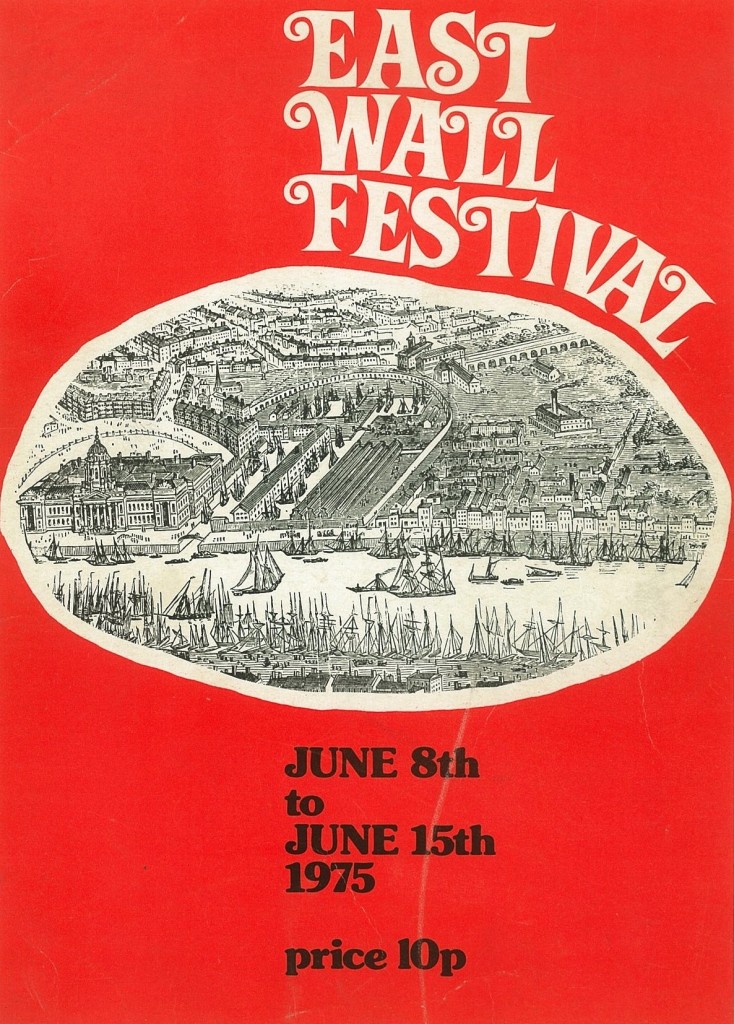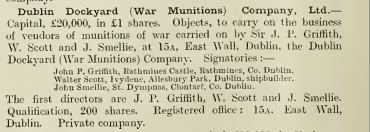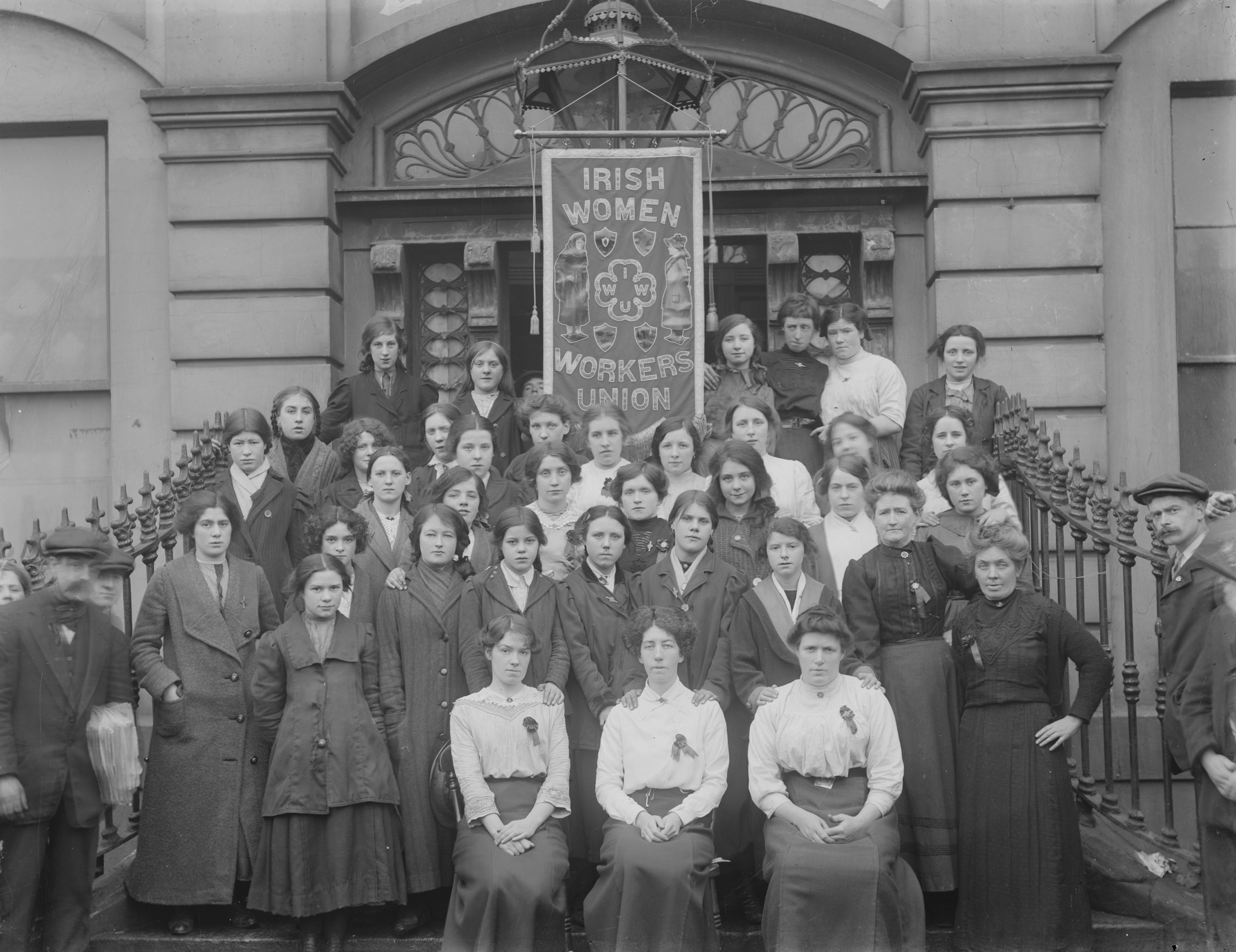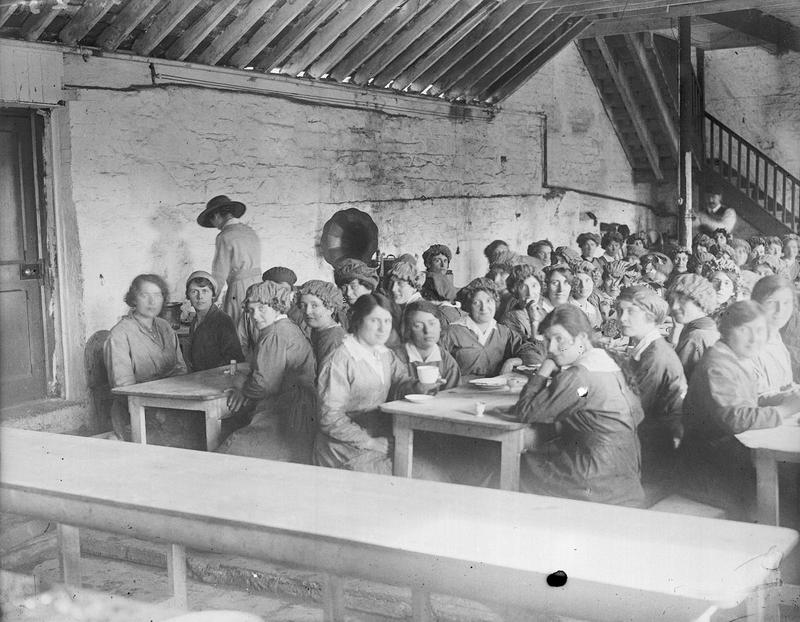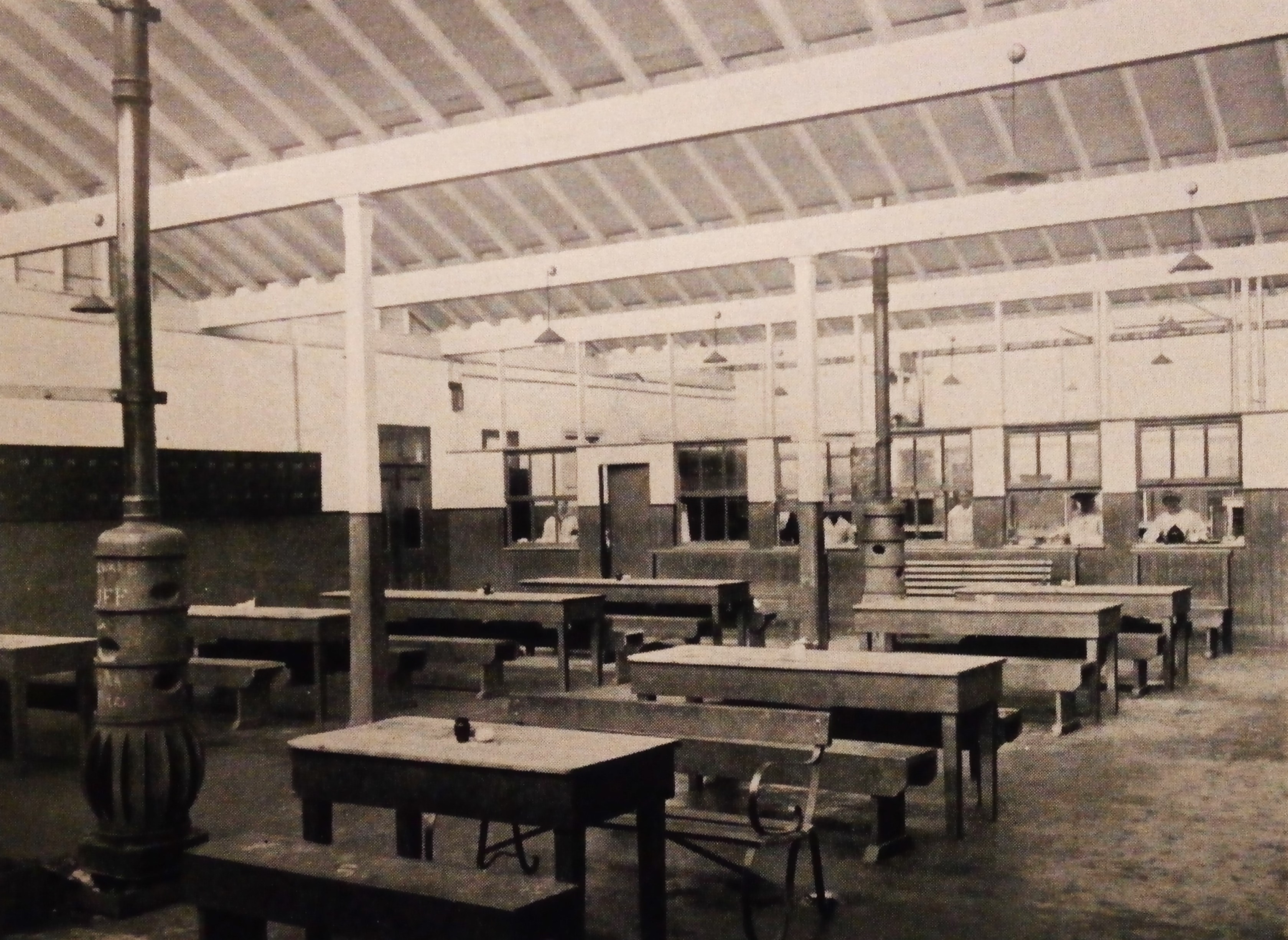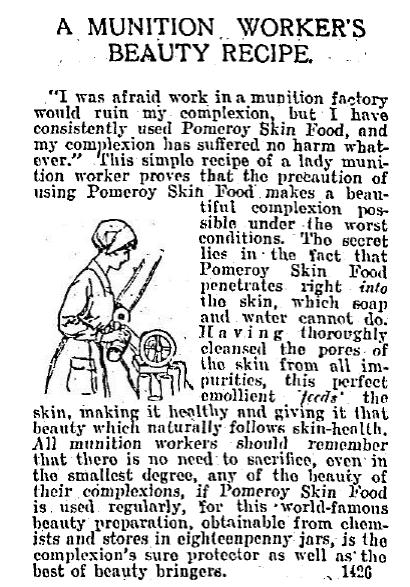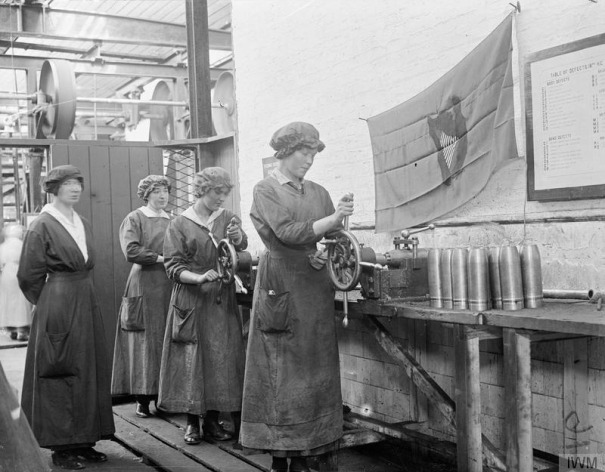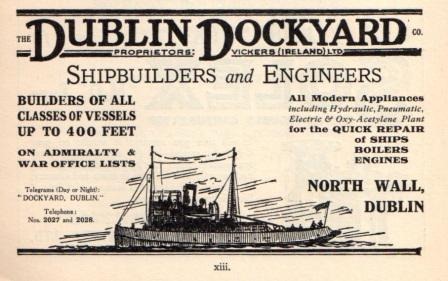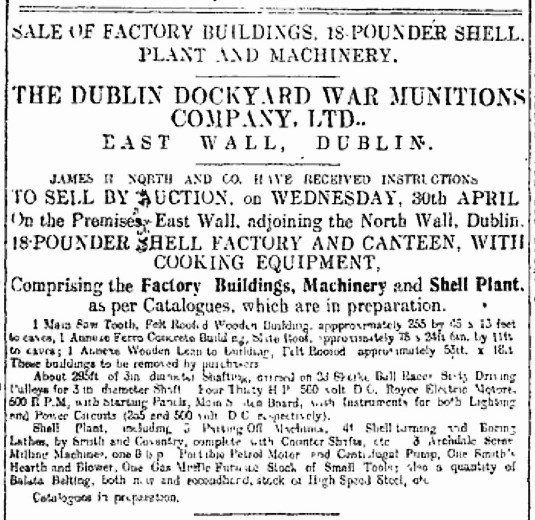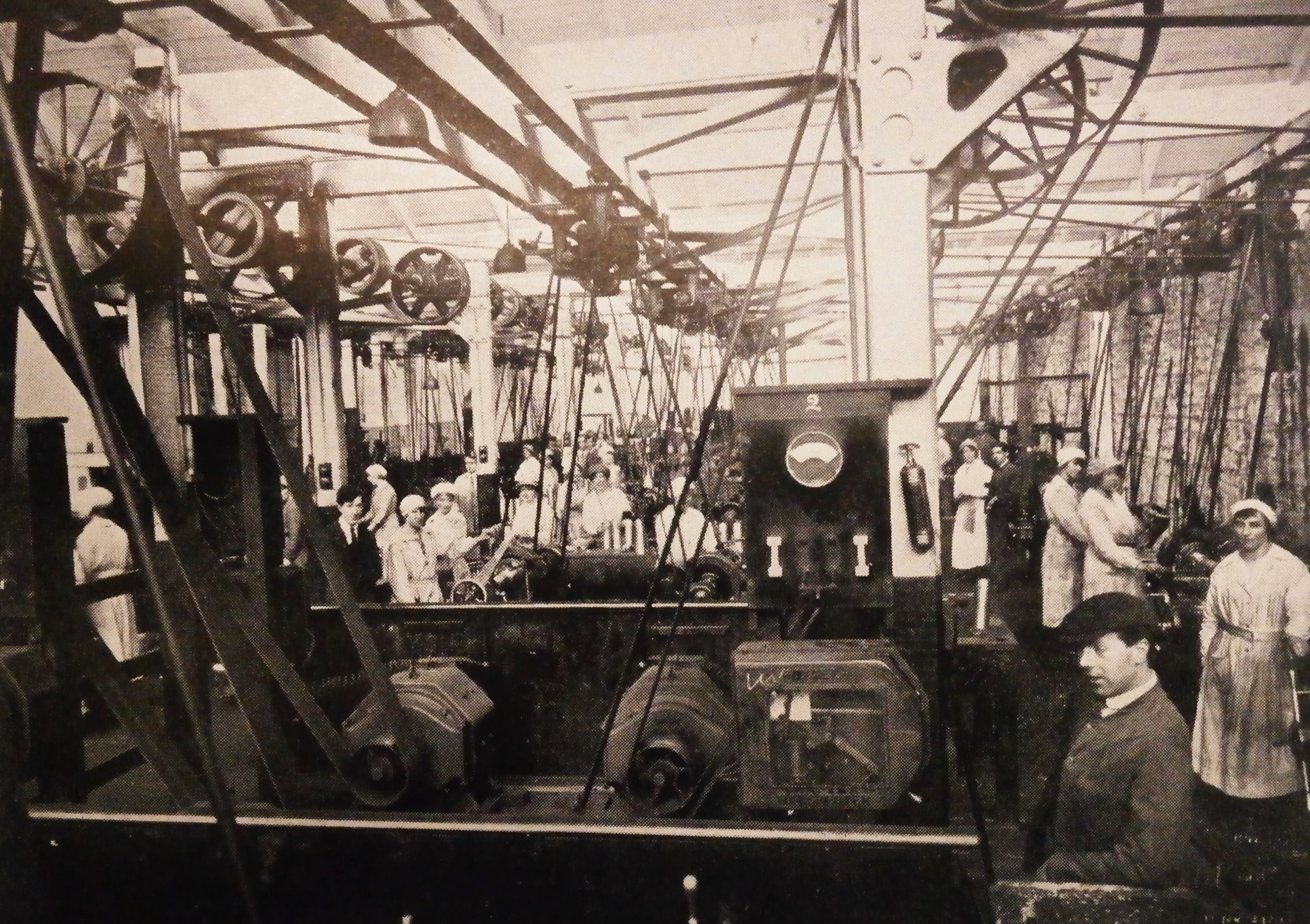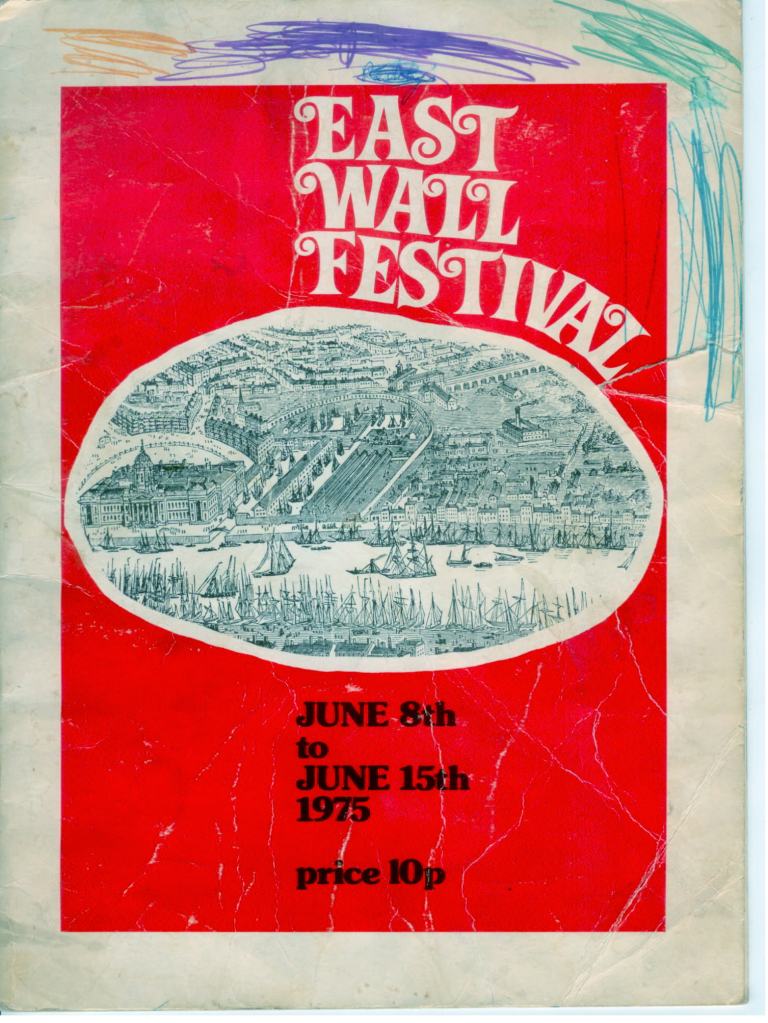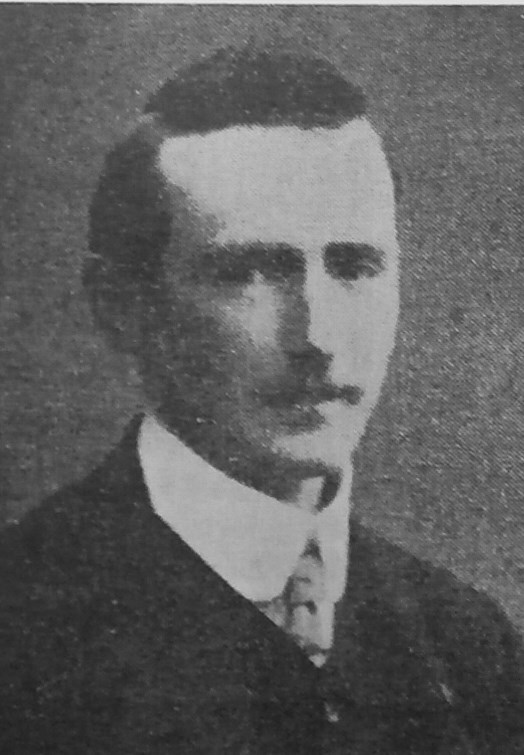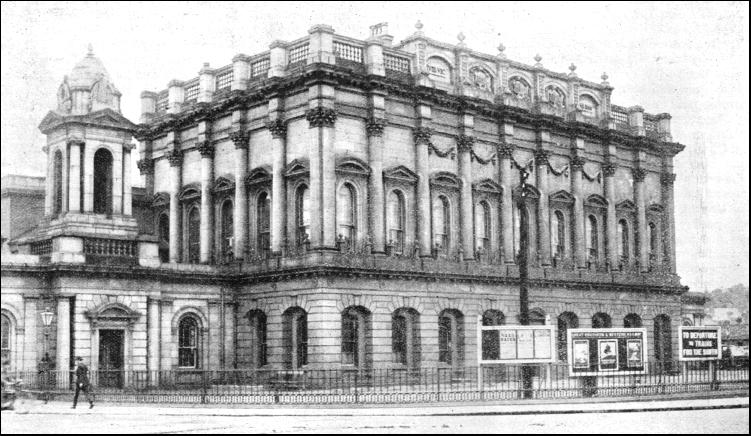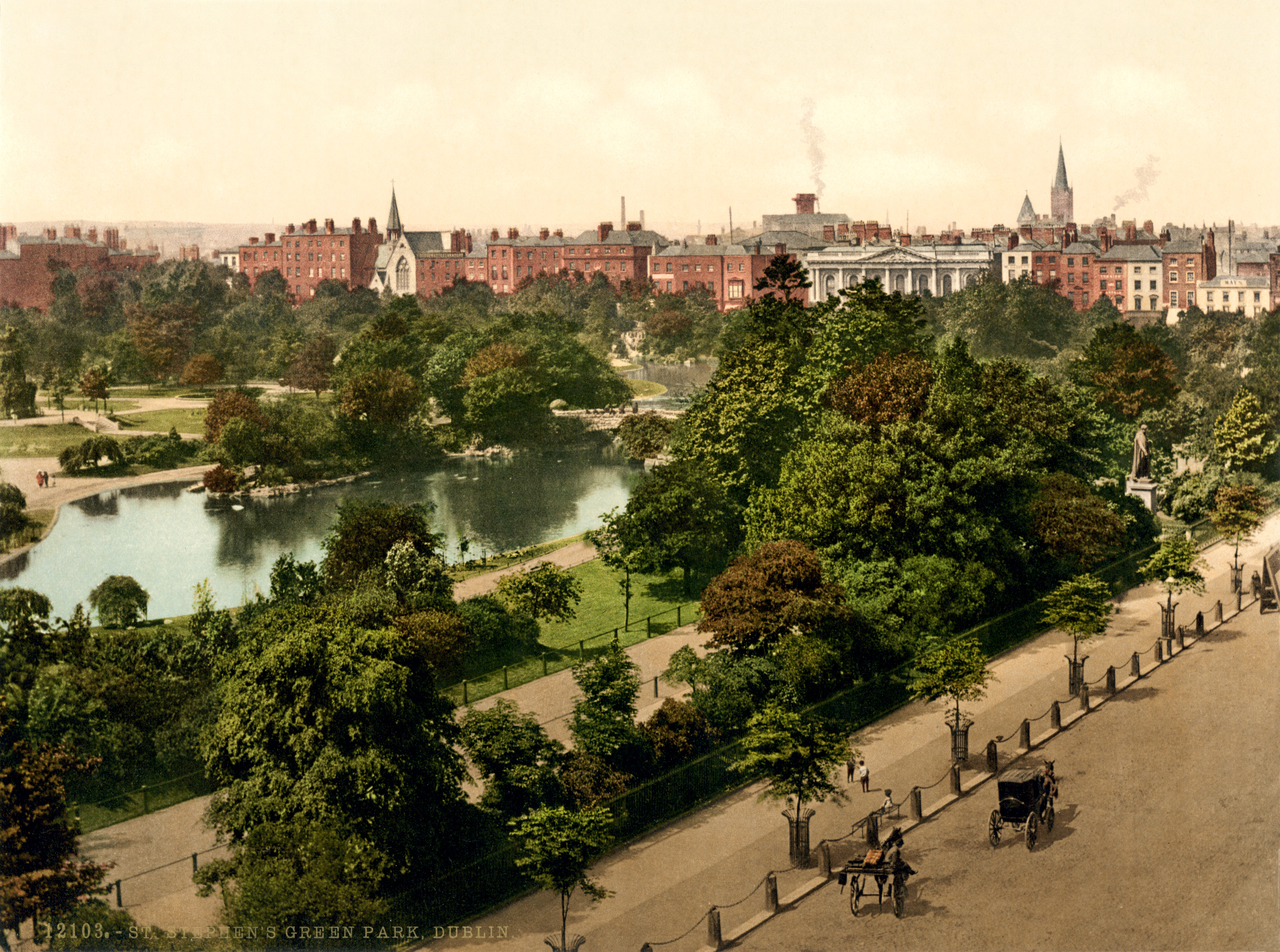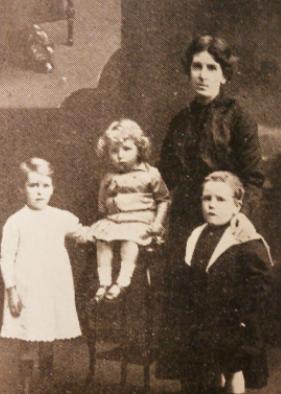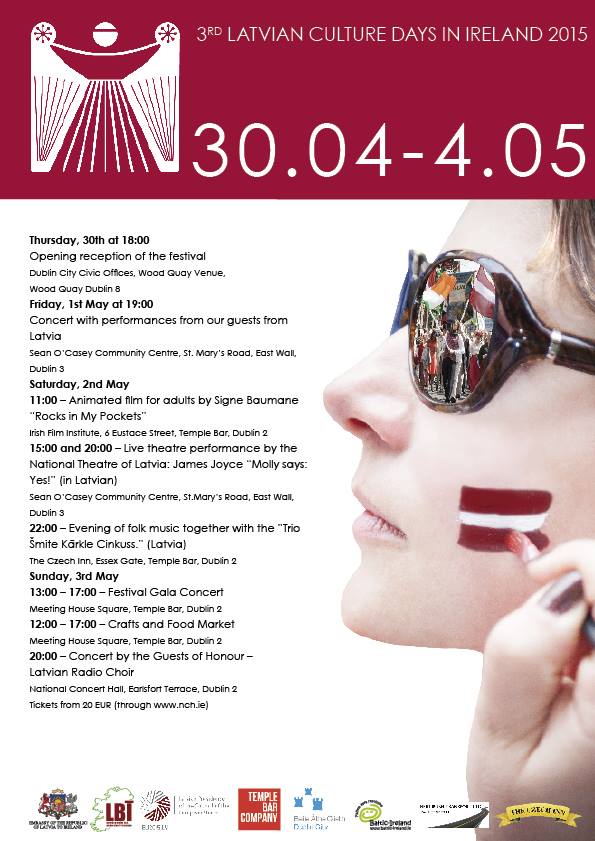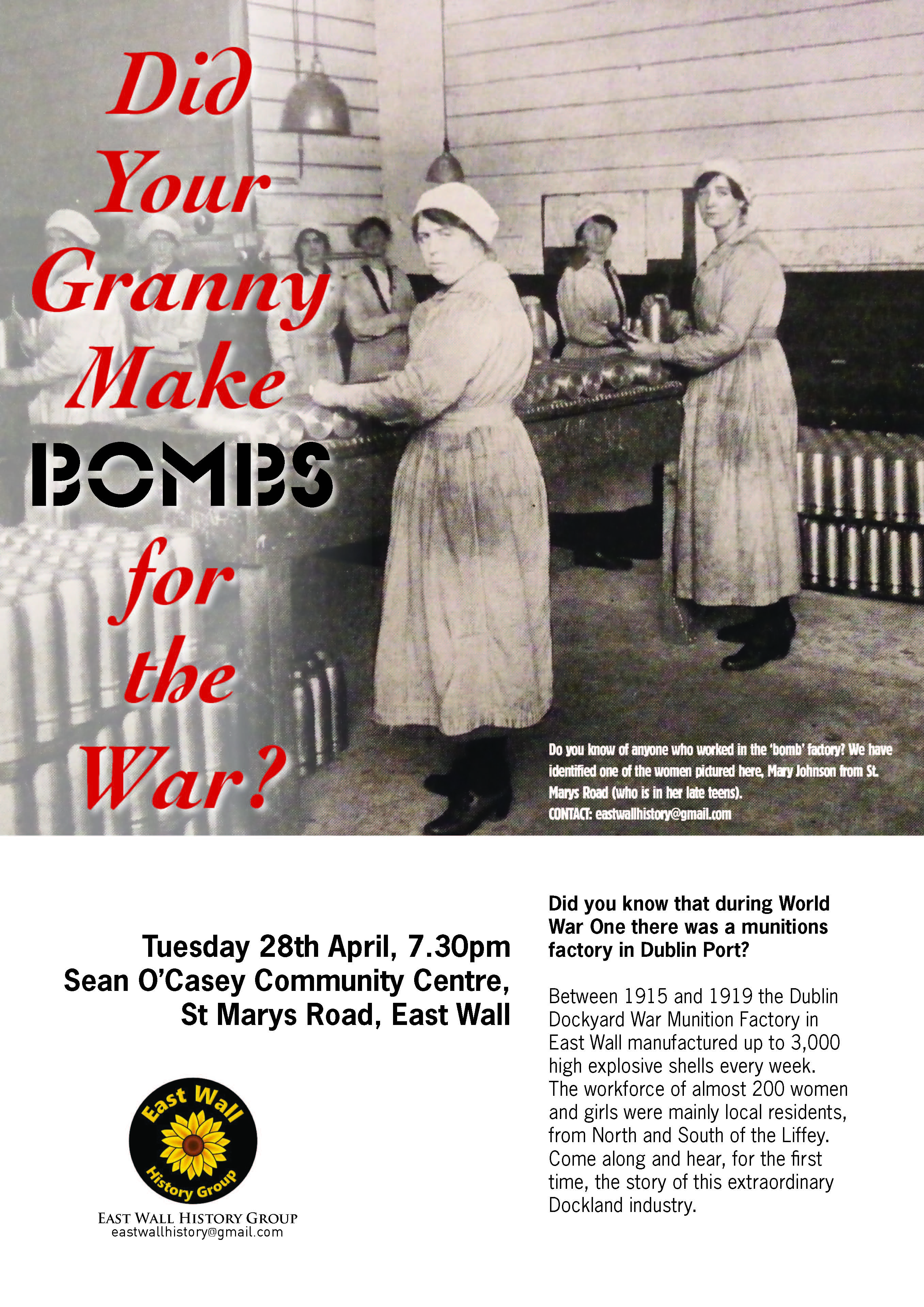May 24
ROCKIN’ ROAD FESTIVAL : 2015
Vintage Cars, Vintage music and all for a good cause
The 2015 Rockin’ Road festival takes place on Sunday 24th May in the grounds of The National Education Centre for Blind Children, Grace Park Road (Beside Rosmini).
Kicking off at midday and running until 8pm this is a great family fun day out with something for everyone including bouncy castles and face painting for the kids plus live music, vintage bikes, cars and of course scooters. There will also be custom and classic machines including some vintage cars, plus trade and craft stalls.
Admission is just €10 with accompanied kids going free, and all proceeds after public liability insurance go to the school.
May 17
EAST WALL FESTIVAL: 1975 – 2015 “…the soundtrack of your life”.
“Music is the soundtrack of your life.”
On this date four decades ago there was great excitement in the locality. The people of East Wall were busy preparing for the first Festival, just three weeks away. And if music does, as the quote says, provide a soundtrack for our lives , then this is what was playing in the background . MUD were enjoying their second week topping the Irish music charts , and would continue to do so for a third week too. They would be knocked from the top spot at the end of the month , and Tammy Wynette would enjoy her own three week run . “Stand by your man” would be the best selling Irish single before, during and after festival week 1975.
Meanwhile , across the water , there was something strange happening , as this oddity was topping the UK singles chart .Other tunes riding high and dominating the airwaves and turn-styles of the nation were Showaddywaddy (“Three steps to Heaven”) , 10CC (“I’m not in love”), Bay City Rollers (“Bye bye baby”) and at least one Irish Star – Red Hurley (“Love is all”).
It is hard to believe that the East Wall Festival is forty years old in June. It certainly doesn’t seem that long ago. Many have very fond memories of that great event, and those in subsequent years. Next Month we will remember the historic festival of 1975, and celebrate the great community we all still enjoy in East Wall.
East Wall Festival Week 2015, celebration from the 6th to 12th June.
Check out the official facebook page here :
https://www.facebook.com/pages/East-Wall-Festival-Week/636259299837477
Contact: eastwallforall@gmail.com
May 09
Did your Granny make bombs in World War One? The story of the Dublin Dockyard War Munitions Factory.
Between 1915 and 1919 the Dublin Dockyard War Munitions Factory operated in Dublin Port. It was established by the Scottish born John Smellie, who was already operating the Dublin Dockyard Company since 1902, his ambitious attempt to establish a ship building industry in the City. Smellie has left a lasting legacy on the local community – unable to find suitable accommodation for his skilled Scottish ship builders, he had acquired land and built his own houses. These 20 unique dwellings at Fairfield Avenue (East Wall) were based on a Glasgow design and seemingly replicated nowhere else in the City, and still stand today. The munitions factory employed almost 200 local women and girls. This is the story of this almost forgotten Dublin Dockland Industry.
On 4th August 1914 Great Britain declared war on Germany bringing Ireland into the First World War. The reserves were called up and thousands flocked to the colours. Everyone knew it would be all over by Christmas – except Lord Kitchener, a Kerryman and Minister for War, who suggested they may need to make at least a 3 year plan. Christmas came and went and the war wasn’t over. However, by March 1915 Britain was ready to make it’s big move to end the war by smashing through the German lines and outmanoeuvring them. This came to pass at Neuve Chapelle in France where British forces fired more shells than had been used in the entire Boer War, lost nearly 10,000 troops but made little advance on the German lines. The fall out, led by the Irish born Press Baron Lord Northcliff, put the blame on poor ordinance. The Germans were producing 250,000 shells a week to Britain’s 30,000 and those that were produced by Britain were said to be of poor quality. This lead to a huge reassessment of arms production and while Irish revolutionaries such as Patrick Pearse and James Connolly were thinking “Britain’s difficulty is Ireland opportunity” – the same thought was occurring to Industrialists, Politicians, and even many Trade Unionists throughout Ireland. There was very little industrialisation in the country outside of Belfast and many saw the war and the armaments industry being created as the opportunity to finally industrialise the country, backed by government funding, creating lasting skills and industries when the war was over, and employment, as Lloyd George would later state, for over 50,000 people.
Lobbying began with North Dock MP Alfie Byrne claiming Ireland contributed £15 million in war taxes and got little in return. The Chamber of Commerce in Dublin set up an All Ireland Munitions and Government Supplies Committee which undertook a survey of Dublin’s existing engineering workshops between the 16th and 24th April 1915 and suggested what uses they could be adapted for in order to win war contracts. They met a favourable reception in London, however the existing government fell and a coalition was formed. Their first act was to set up a new powerful department called the Ministry of Munitions who would award all war contracts and direct munitions production for the duration of hostilities. In July the chamber set up the Dublin Armaments Committee, “representative of all trades in the city which it was considered could assist” and organised visits to the War Office, Woolwich Arsenal, and arms manufacturing centres in Birmingham and other cities. The same month Captains R. C. Kelly arrived in Dublin and set up the Ministry of Munitions’ offices at number 32 Nassau Street. Kelly had headed up the North Eastern Armaments Committee in Britain and had shown great skill in maximising resources of the various engineering concerns available.( However in November he went on to be appointed head of recruitment in Ireland and managed to double the figures before returning to London in 1916). Initially there was great optimism, the Chamber claiming that this new industry would boost the economy with the employment of “several hundred hands” and the “distribution of thousands of pounds per week in wages”. They also noted that large orders worth thousands of pounds had been placed with Engineering and other firms in the city. However, of the 1369 contracts offered up to August 1916 only 24 or 1.27% went to Irish companies and most of those went to the Harland and Wolfe Shipyard.
In 1916 The Dublin Chamber of Commerce, commenting on a meeting held with the new ministry, suggested that the results “fell far short of what is due to this country having regard to the expenditure in Great Britain.” Not surprisingly nearly 16,320 Irish people were working in munitions factories in England by 11th May 1917 attracted by persuasive advertising campaigns offering higher wages. Agents of leading manufactures visited Ireland on recruiting drives leading one Limerick writer to comment that local girls believed “money could be picked up on the floors of English Shell Factories as easily as shells on the Irish sea-shore.”
The Ministry of Munitions had the power to nationalise industries which they did with the Irish Rail network in 1917. They could commandeer factories such as breweries for chemical production; they could arbitrate in labour disputes such as the long running strike between the ITGWU and the Dublin Steampacket Company between 1915-’16. They had the power to commandeer raw materials – they bought the entire wool production in Ireland in 1917, they commandeered much of the Irish merchant fleet, and became the largest purchaser of Ulster linen to be used in aircraft manufacture. They were immensely powerful with major powers of compulsion. They also issued licenses to allow workers move between jobs in priority industries. Ordinary labour problems involving individual workers were dealt with during their sittings at the Northern and Southern Police courts in Dublin. However, the Dublin representatives of the Ministry seem to have left a lot to be desired and were a constant source of criticism from Irish business interests. They failed to get a Production Depot operating in Dublin until 1917. This was a central location where Irish made products could be checked locally before being shipped to England, saving enormous expense on shipping if the goods were to be returned as faulty. There was also expert advice available to assist contractors on various aspects of what they were producing. It had been promised in March 1916 but would take a further 12 months to materialise. Curiously enough the Production Depot was located at Oriel House in Westland Row which would play a very sinister role during the War of Independence and Civil War.
For Irish companies War Contracts were survival. As the ministry controlled raw materials, if you weren’t’t producing for the war effort you were likely to go out of business. Building companies adapted to make wooden ammunition boxes, often at break-even prices or at a loss, to avoid bankruptcy. Contracts for a million boxes were awarded to Irish companies after considerable lobbying. Even then manufacturers, having invested capital to secure contracts, and successfully completed orders, often found themselves ignored for further tenders. Others such as the Dublin Dockyard Company found themselves having to pay premium prices for poor quality American steel on the open market the quality of which only became apparent at the end of the manufacturing process. John Smellie, the Scottish born owner and manager of the Dockyard had been astute enough to secure a repairs contract with the Royal Navy as early as September 1914. They were soon producing pontoon bridges, floating targets to train gun crews, fitting ship gun platforms, dept charges, wireless cabins, mine laying appliances, telegraph poles, among other war related work.
Shell and hand grenade factories had been set up in Belfast early in the war and following all the lobbying efforts it was announced that the government was to set up a National Shell Factory at Park Gate Street in 1915. This was greeted with great enthusiasm and a Captain Fairbairn Downie was brought over to run the enterprise. Downie, from Alnwick in Newcastle, was a skilled engineer and administrator, with a distinguished career in naval and military engineering as well as with Armstrong and Whitworth aircraft manufacturers before the war. Since then he had executed government contracts with various manufacturers in the Far East, South American, Canada, and the USA. He would be promoted to Major before he resigned in January 1918. Progress on the National Shell Factory was slow most of their early employees being engaged in clearing and adapting the buildings. Substantial alterations had to be made to the complex with the provision of shafting and fresh girder work. It took almost a year to hit full production. At much the same time the Lee Arrow Company at Clarke’s Bridge in Cork and the Dublin Dockyard Company independently secured shell making contracts, the Dockyard’s being for 50,000 shells and having raised capital of £20,000 set up the Dublin Dockyard War Munitions Factory at 15a East Wall on a green-field site beside their graving docks in November 1915. The building was wooden in construction with 2 corridors of 4 rows of machines. There were storage rooms at either end for the raw steel bars and the finished shells. The Dockyards had “Priority Establishment” status thus protecting their staff from recruitment; however regulations stated that only 5% of munitions manufacturing staff could be male so 12 girls were recruited and sent to the Vickers Company in Barrow on Furnace for training. They would in turn not only train the rest of the girls recruited for the factory but also the first 50 girls recruited for the National Shell Factory at Park Gate Street.
While the Dockyard Factory awaited the arrival of the machinery from Manchester they acquired some lathes that were about 50-60 years old and began producing components for the National Shell Factory. The National Factory had ordered machines from Sweden and the USA but as these seemed to take forever to arrive they began a process of commandeering machines from Dublin Engineering works. In particular the Technical Training College at Bolton Street was a major source of equipment, much to the detriment of it’s educational role. The Fuse Factory at the Inchicore Works acquired lathes from the Technical Institute in Cork, leaving a gap in the education of apprentices for several years. The Natioanl factory recruited through the Labour Exchange following a direction from the Board of Trade to relieve some of the 2885 unemployed on the books in Dublin, 1248 of whom were women. The Dockyard Company, on the other hand recruited through personal recommendation, thus most of their girls were local from either the North or South Docks. The National drew staff from a wide area from Dollymount to Chapelizod working 3 shifts in 24 hours. This created great difficulty for them as the Trams didn’t’t start in time for girls on the 6am shift and many had a long walk to work. 20 girls were dismissed in October 1916 for poor time-keeping. The Dockyard Company worked 2 shifts, the recommended standard following experiments at Vickers in 1916, with a target of 2000 shells per week. In a short time they were producing 3000.
One of the early recruits of the National Factory was Christine “Molly” Maguire. Born in London to Irish Parents, she had been schooled in Belfast, and as labour problems grew in the factory Maguire made contact with the British National Federation of Women’s Workers and began to unionise the shop. The NFWW was aware of the Irish Women Workers Union (IWWU) but they felt (and the IWWU agreed) that they were better placed to represent women in the munitions Industry. Maguire was made National Organizer and spread the Union not only to the Dockyard Factory but also to the National Factories which had opened at Cork and Galway, and the Cartridge Factory at Waterford. She was so successful that she returned to England to work for the Union as an activist there. With the near collapse of the IWWU after the 1916 Rising and with so many of it’s key people in prison, Irish born Helena Flowers, the Assistant Secretary of the NFWW, spent much of 1917 – 18 in Ireland putting the Union on a sound basis, spreading their recruitment into Jam Factories and other poorly paying areas employing women for as little as 4 shillings per week. Aware that there was opposition to British Unions coming across and starting up for workers generally the NFWW claimed that “ a unanimous decision was arrived at with responsible sections of thought in Dublin that the munitions workers occupied a different position from the workers in the ordinary industries and should be organised into a Branch of the National Federation of Women Workers as they felt that without the strength of the Federation behind them, little could be done to secure equality of treatment for the workers in the Irish National Shell Factories.” In March 1916, twelve controlled establishments in Ireland had been referred to the Ministry of Munitions with regard to women’s wages. According to the official Ministry History nothing was done following representations to the ministry by the Engineering Employers Federation in relation to the lower cost of living in Ireland during negotiation over men’s wage increases later that year. In July the ministry specifically exempted 11 Irish establishments thus allowing them to pay below the general British rate. In May 1917 the union secured an agreement with the ministry to place the wages of Irish women in the munitions industry on an equal footing with their British counterparts, an increase from 18 to 24 shillings per week and from 23 to 30 shillings for night shift work. Only two soap factories on the controlled register were exempted. In November 1917 a further increase of 5 shillings was awarded by the ministry and immediately the Engineering Federation lobbied for an Irish exemption. This was refused on the basis that these awards “must apply to Irish firms.” Following a strike and lock out of women at the National Factory in September 1918 they achieved the right to have women shop stewards negotiate on behalf of women workers. Then in 1919 with the munitions factories closing and the IWWU back on it’s feet, they handed their entire operation over to Louis Bennet the new leader of the IWWU.
At full production the National Factory employed 809 (of whom 531 were women), the Docklands Company just 200. As the employment of women was somewhat novel, the ministry produced numerous advisory booklets for would be manufacturers which examined such diverse subjects as the nutritional health needs of women workers, factory ergonomics, and guidelines for the efficient design and management of a staff canteen. The Women’s National Health Association of Ireland produced a booklet on “War and the Food of the Dublin Labourer” showing up the deficiencies of the normal diet for industrial work and how to correct it. A report by Dr. Stanley Kent on “Industrial Fatigue” led to the decision that the factories should only work 6 days a week as workers “resting on the seventh” were “capable of longer and sustained effort” and had much higher productivity than those who worked the full week without a break. The Docklands factory was unique in Ireland being the only munitions factory built on a green-field site. The Directors had visited several private operations in England in order to find “the best features of each” which would be incorporated into the Docklands project. The timber design and saw-tooth roof admitted “an abundance of light” and all the starting and stopping gears of the machines were standardised in order to minimise accidents. By the end of the war their most common industrial accident was an occasional finger injury.
Perhaps the best compliment to the early success of the Dockyard Factory was that the Port and Docks Board, seeing a downturn in business decided they needed to shed 200 jobs. They sought to channel these into munitions production. The Board felt that their engineering works could be easily converted to shell manufacturing and arrangements were set up to visit the National Factory in Parkgate Street as well as the Fuse Factory at the Inchicore Works and George Watt’s Engineering Works at Bridgefoot Street between February and March 1916. The ministry found that the Port and Docks Plant was “unsuitable for munitions work”, however the Board subsequently offered to supply the floor space and electric power from their power station at “a favourable rate” if the ministry would supply the plant and machinery. This was turned down. The board had already given a similar deal for power supply to the dockyard factory. By the end of 1916 they found to be hugely underestimated the cost involved and began renegotiating the arrangement towards the end of that year.
A contemporary description of the docklands factory described how the girls appeared to enjoy their employment. The writer claimed that modern machines required “delicate handling” or “skill rather than muscle” and the girls being of “superior order” had taken an “intelligent interest” in the work they were turning out. Smellie himself recalled that “the 200 girls employed soon became highly efficient, and were quick in adapting themselves to machine work, and to all the engineering operations of shell turning, including working to gauge limits of but one or two thousandths of an inch.” He Claimed “It was perfectly amazing to note with what deftness of hand and eye a cut was made so accurate in judgement as to satisfy forthwith the limit gauges without resort to the usual trial and error of cut upon cut.”
Labour problems at the National were constant with several strikes over non-payment of war bonuses and conditions. Captain Downie was known for his diplomacy and skill in labour problems and seemed to have a real bond with the women workers. His resignation early in 1918 came as he was increasingly frustrated by elements at the ministry in London in his attempts to promote and increase Ireland’s contribution to the War effort. He was attempting to establish an aircraft manufacturing plant at Celbridge when he resigned. Emmet O’Connor claims this was due to Unionist and British employers conspiring to “freeze nationalist Ireland out of lucrative war contracts” However there may have been a more sinister element to their labour problems. Joe Good, one of a number of members of the IRA including Sam Reilly and Joe Leonard who would work at the National Factory in 1918, claimed it was their policy to “get the greatest possible amount of wages whilst doing the least possible amount of work – without getting fired.”
The National’s canteen was run by a mix of volunteer and paid labour and rarely functioned during the nightshift leading to claims that workers couldn’t even get a cup of tea during their shift. At least 5 workers died in work related accidents, whereas the Dockyard Company was only affected by one strike and that was an illegal one involving 15 apprentices who seemed to have poor records in time-keeping. The Ministry of Munitions intervened before it could spread and effect production among the munitions workers. The most serious accident experienced by the dockyard factory was when a single girl lost a finger when it was caught in a lathe. The streamlined design meant there was a minimum handling of the shells and a steady flow towards the end of the production line.
Economics was probably the main motivator for the Munitions Factory girls. While there was a feeling that Irish workers should be cheaper than their English colleagues and women work for less than men, the English rates had been widely reported in the media and created a sense of expectation among would-be recruits. The basic rate was £1 per week for girls over 18 (reduced to 15s if work was stopped for reasons such as air-raids etc). After a four week qualifying period a complex productivity scheme kicked in. For most girls the economic freedom this brought was life changing. The sudden increase of disposable income among the Munitions Factory girls was enough to attract cosmetics companies such as Pomeroy Skin food, Ven Yusa Oxigen Face Cream, and the Oatine Company to distribute their products, targeted at munitions factory workers, in Ireland. Sean O’Casey also found the local impact of the factory significant enough to mention it in his play “The Silver Tassie”, where one character is said to have plenty of money she earned working there.
John Smellie, manager of the Dockyard, claimed that many of the girls had fathers, uncles, brothers, or neighbours, serving at the front and had read letters sent back home telling how shells had exploded in the hands of gun-crews due to poor manufacture. For many it was personal, the high standards of their work, would keep their families alive. During the Easter Rising the girls at the National Shell Factory all reported for work and despite heavy fighting produced 800 shells during Easter Week. Mrs Ryan, a district Nurse writing in the State of Public Health Report for 1916 claimed that many women nursing new-born babies chose to work in the shell factories to stretch family incomes and meet the extra expenses involved. However, a curious case involved 20 Irish girls working at a shell factory in Hereford in England in 1917 saw them dismissed and sent home for destroying moral at the Factory. The girls sang Sinn Fein and republican songs all day long and cast aspersions on the “Tommies” at the front. The English girls began to wear Red and Blue colours to which the Irish girls responded by wearing green, white and orange. The episode culminated in a pitched battle at the local train station one Friday evening and the Irish girls were shown the door in order to restore peace and productivity. Some echo of this can be seen in a photograph of the National Factory where what appears to be a Republican Flag sits beside a Union Jack to inspire the female workers. Interestingly, Fianna member Gary Holohan, who worked in the Power Plant at the Docks, stated that many who lost their jobs at the Docks after the 1916 Rising found employment at the Dockyard Munitions Factory afterwards.
Unlike the National Shell Factory, the operation in the docklands was shut down during the Rising. As the British Army took control of the area they dismissed all but essential staff needed to operate the port. The electricity supply, provided by the Docklands Power plant, appears to have been sabotaged during the Rising so it would have been impossible to work anyway. The infamous police undercover agent ‘Chalk’ had reported in April 1916 that four members of the Citizen Army were working at the National Shell Factory in Parkgate Street as labourers. These would appear to have been members of the Kimmage Garrison Joe Vize, Matt and Joe Furlong, and another volunteer named Moloney who had all come over from London. About a week before the Rising Vize walked into work smoking a pipe which he refused to put out. He was instantly dismissed. The others then walked out in sympathy with him. They were surrounded by armed guards but were not intimidated by the bayonet’s being thrust at them, and they simply continued out of the factory. The soldiers didn’t’t know what to do next. All were called up before a munitions employment tribunal but the Rising intervened before any action could be taken. Significant numbers of Volunteers and Citizen Army men worked in the Dublin Dockyard Company and Dublin Port generally so it’s likely that there was a similar infiltration of the Dockyard Munitions Factory in the run up to the Rising, though we have yet to see evidence of this.
A total of 648,150 shells were produced by the Dockland Company with much of the component parts coming from smaller workshops in the Dublin area. Each of the girls at the Dockyard Factory was on a personal bonus and according to the directors took a personal interest in maintaining high standards of production. For girls such as Florence Lea from Sandymount it was life changing. She went from a Dress-makers apprentice on 2 shilling per week to a munitions worker earning 50 shillings for a 48 hour week by 1918. Similarly 16 year old Mary Johnson from St Mary’s Road, East Wall, not only found earning a man’s wages gave her independence but allowed her to make a significant contribution to the family household budget as the cheap nutritional meals provided at the Dockyard factory significantly contributed to her disposable income. During World War II when times were bad in Dublin she moved to Birmingham to work in munitions as an experienced veteran along with others from the community. (Perhaps it was a new sense of economic freedom during these early years that saw her pursue a career as a Tivoli dancer also too).
In April 1919 with the war at an end the Dockyard Factory closed, the girls were laid off, and the factory and it‘s contents put up for auction on the 30th April. The other factories in Dublin, Cork, Galway, and Waterford followed over the ensuing months. Attempts to buy out the factories as going concerns were rejected and the equipment sold off piece by piece at auction. Smellie had actually tried to offer his factory as a going concern but there were no takers. The machinery was sold as scrap for £1,600, about a tenth of their cost. The Factory itself was withdrawn for sale and broken up to be recycled. The inventories of the National Factories were widely advertised throughout Lancashire, Yorkshire, and other counties in Britain and much of the machinery left the country. Despite all the lobbying and arm-twisting by Irish Politicians and Business Groups the munitions industries impact on the Irish Economy was short-lived. As the Secretary of the All Ireland Munitions and Government Supplies Committee, Edward J. Riordan put it, “the eyes of Irish Businessmen were opened to the hopelessness of their expecting to receive anything like fair-play from English officials either high or low.”
For John Smellie, whatever patriotic motives he may have had, the munitions factory guaranteed the survival of his shipbuilding business during lean times. As the only privately built factory in Ireland, he was prepared to take on new practices to make the business work. But he wasn’t sentimental. For all the innovation in his wooden saw-toothed factory, it was easily dismantled and sold off or reused and the land handed back to the Port and Docks Board. His was the first factory to close and his plant and machinery sold off before the National Factories had shut their doors. He was a realist and didn’t look around for alternative uses.
Aside from the women who for a few brief years saw their working status enhanced and their right and ability to represent themselves recognised, the main beneficiaries of the short-lived munitions industry were arguably the IRA who used the factories as a training ground for operations such as the underground bomb and hand grenade factory set up at 198 Parnell Street in 1919, a number of whose staff were also employed at Parkgate Street. The training and experience they had received would prove extremely useful as the War of Independence got underway. Even some of the equipment used at Parkgate was bought by the IRA during it’s closing down sale to equip their deadly new enterprise.
If you have any clarifications, corrections or additional information please contact us. We are particularly anxious to hear from family members of women (or the small number of men) who were involved with the Munitions Industry. All contributions or assistance will be fully acknowledged and credited.
eastwallhistory@gmail.com
We would like to thank all those who helped compile this feature, including the Dublin Dockworkers Preservation Society, the Sean O’Casey Theatre and the Ringsend and Irishtown Community Centre who helped us host two public talks on the topic. Thanks to the Pat, Paul and all the O’Brien’s for the family material on Mary Johnson, and to Ronan Waide for sourcing an important detail relating to the equipment sell off. Much appreciated.
May 08
FESTIVAL WEEK 2015 : June 6th -13th
 Can you believe it was almost 40 years since the great community festivals of the 1970′s began ? Our first festival was in June of 1975 ! Next month let’s remember the great community spirit of old and celebrate how it has lived on. Check out our facebook page for details – a full programme of events will be available shortly.
Can you believe it was almost 40 years since the great community festivals of the 1970′s began ? Our first festival was in June of 1975 ! Next month let’s remember the great community spirit of old and celebrate how it has lived on. Check out our facebook page for details – a full programme of events will be available shortly.
https://www.facebook.com/pages/East-Wall-Festival-Week/636259299837477
Contact : eastwallforall@gmail.com
Apr 25
“HE WAS BURIED FROM STEPHENS GREEN” – The life and death of James Corcoran – North Dock resident, trade unionist and Citizen Army volunteer.
The 25th of April 1916 was the second day of the Easter Rising. After the surprise and confusion of Mondays events the British forces had taking stock and were preparing their response. For the rebel garrison at Stephens Green this response would be deadly. In the early hours of the morning the Green was raked with machine gun and rifle fire from the overlooking Shelbourne Hotel. James Corcoran, was hit in this initial assault and died instantly. He had ‘joined’ the Irish Citizen Army less than 24 hours earlier. This is his story – a North Dock resident, a trade unionist and a late-comer to the Citizen Army, as told by Hugo McGuinness.
The Corcoran’s were small farmers from Brideswell Little, Ballyellis, Cranford, in County Wexford. It has been suggested that there was a family connection with the 1798 Veteran, James Corcoran. Following the Rebellion’s defeat he led a stirring resistance up to 1804 with his small band known as the ‘Babes in the Woods’. Betrayed, they were killed in an ambush by the Kilkenny Yeomanry and Corcoran’s body displayed for some time outside Wexford Gaol as a warning. However it has proved difficult to establish the veracity of this link.
By the late 19th century James Corcoran (senior) and his wife Elizabeth were farming a small holding near Gorey, with James supplementing his income by working as a Blacksmith. There were 11 children in all, two of whom, Bessie and Maryanne both died young. Andrew, the eldest son, followed his father’s profession as farmer and blacksmith and was to inherit the family farm. Two other sons, James and Thomas were to be found professions. James Corcoran, junior, was born in Craanford, Gorey in 1883. Following school he was apprenticed as a Purveyor’s Assistant and by 1901 was working for Michael Byrne, a large scale Provisions Merchant in the Markets Area of Dublin. Byrne was also from Wexford, so the position was probably arranged through family connections. The business had a staff of 7, including apprentices, living over his premises at 25 Mary’s Abbey.
We know very little about this part of Corcoran’s life but it would have consisted of long hours with little freedom available “living over the shop.” His employer was his landlord and his earnings would have been poor, largely consisting of his keep and pocket money. A Grocers Assistants Association had existed since 1863 but they were no match for the more powerful Licensed Vintners and Grocers Association. The Manchester based National Amalgamated Union of Shop Assistants operated in Ireland but it would be 1918 before grocer’s assistants had the type of representation which gave them the confidence to strike for better conditions.
“…wretched conditions of service which existed in Ireland”
It was probably the chance to earn a decent wage with fixed hours that saw him leave Byrne’s shop and we next encounter him in the records in 1903 when he joined the Kingsbridge Branch of the Amalgamated Railway Servants Union. Corcoran was working as a porter with the Great Southern Railways. It was a turbulent time with the Union taking an aggressive stance against the apathy and indifference of Irish Rail workers. At a meeting at the Trades Hall in Capel Street in July 1905, J. H. Thompson, the Union’s President, spelled out how Irish apathy to the “wretched conditions of service which existed in Ireland” was hampering the efforts of their English co-workers in improving conditions there. He called for a general combination of rail workers pointing out that “all grades of the railway service should join one common union for the benefit of all and for the promotion of the interests of all.” He also pointed out that “they had to consider the safeguard which their children had in the event of the bread-winner being swept away.”
In July 1907 at the Irish Branch of the Union’s AGM in Moran’s Hotel, delegates were gearing up for a general strike over recognition by the Irish Railway companies. While they felt there was room to compromise on hours and wages the unwillingness of the companies to recognise the Union as the representative of the workforce was the cornerstone of all talks. Mr. Murphy of the Kingsbridge Branch claimed that the issue was more with “the interference of under-strappers than of the board of Directors” as it was “almost impossible to get into the Boardroom”. By October the London Daily Chronicle was reporting that the 384 union members, about 90% of the workforce at Kingsbridge were preparing to strike for recognition. It also reported that the members at Inchicore Branch, comprising Firemen and Drivers, were in solidarity with their fellow unionists. The Great Southern Railway Company had begun training Clerks as signalmen in anticipation of the strike but without drivers their operation, as the Union pointed out, was bound to come to a halt. Ultimately the employers gave in and the strike was averted. Corcoran in the meantime had begun working as a carter and left the railways having found employment as a Breadvan driver.
In 1908 he was living at 15 Lower Oriel Street in the North Dock. This was a private house let out in rooms to a number of families. On the 31st August of that year he married Kilkenny woman Margaret Costello. Her recently deceased father, John, had also been a driver, working for the Grand Canal Company. Corcoran obviously had some ambition as he was earning about 35 shillings a week and he moved the short distance to No. 2 Elizabeth Place, off Oriel Street, a 5 roomed house costing 7 shillings per week rent. Some of this was offset by Corcoran’s Brother Thomas (working as a Grocer’s Assistant) and Sister Theresa (working as a house-keeper) moving in with them to share the expense. The Corcoran’s family would quickly grow, with Margaret being born in 1911, James in 1912, and John in 1914. Another child had unfortunately died young.
“Strikes were in the air at the time…”
1911 saw a series of strikes which involved rail workers and Carters in the North Docks. Troops were stationed on the rail lines and the quays and local school boys were even inspired to strike. Violent incidents including the discharging of firearms occurred in the Sheriff Street and Spencer Dock areas. It was to be an eventful year for Corcoran. On the 26th September that year a dispute broke out between the Operative Bakers and the Master Bakers Association leading to an all out strike in Dublin. Similar strikes broke out in Belfast and London later that year. By October the strike was collapsing and the Unions tried to get as many strikers re-employed as possible but there were no guarantees. Corcoran retained his job but given his union politics and his support for the strike it seems likely that life was difficult for him.
In August 1912 his employment was to change again, this time to the London and North Western Railway. He rejoined the National Union of Railway Servants on the 8th August. The LNWR were a short walk from home, and after the difficulties of the British coal strike and foot and mouth scare earlier in the year, which had seen a major downturn in business, the company was now booming again. Just weeks after he joined, on the 24th of August, the SS Cambera brought in 1000 tourists leaving the cities carmen with a “busy time fulfilling all their engagements.”
However just over a year later he was to change jobs again, this time to the Midlands North Eastern Railway. This also involved a shift in union membership, to the North Wall branch of the British based National Union of Railwaymen.His membership began on the 11th August 1913, just as the Great lockout was looming. On Saturday 8th September 1913, 180 members of the ITGWU walked out of work at the Midlands Railway at Broadstone and the strike quickly spread to their North Wall depot. The demands were for a minimum wage of £1. Two years earlier in 1911 Irish Railwaymen had struck in sympathy with their English colleagues and it is likely that James Larkin expected that this would be reciprocated, and that the demands of their fellow workers in Ireland in 1913 would be backed. However this support never came. The strike was settled within a few days but by the 15th of the month the company published notices that they would be unable to deliver goods at either Broadstone or North Wall and that customers would have to make their own arrangements due to the unsettled nature of things caused by the general strike. It seems probable that Corcoran was caught up in this as he was dismissed along with other colleagues such as Peter Coates and James Barry, his near neighbours in the North Docks and both members of the Irish Citizen Army. Employment seems to have been irregular but he was working for Lairds, the Scottish Shipping Company at 73 North Wall in May 1914, when his son John was born. Times must have been hard as he was arrested in July 1914 for stealing a pair of boots worth 8/6 and after a week in Mountjoy was released on a fine of 10 shillings.
Corcoran returned to working as a bread van driver, earning £2.10 a week, all of which he gave to his wife to support the family. He seems to have joined the ITGWU at this time and it was union business that brought him to Liberty Hall on the faithful morning of the 24th April 1916. Although Corcoran had several neighbours in both the Volunteers and Citizen Army he isn’t known to have had an association with either organisation. However as he climbed the steps and looked at the mobilisation going on around him it seems he decided to throw in his lot and march behind Michael Mallin to Stephens Green.
“ A cheerful and sad sight”
Initially there was a festive air about the occupation of Stephens Green. Frank Martin of the Royal Irish rifles, recalled seeing the Citizens Army there, but though nothing of it as he assumed they had got permission to camp out over the holiday weekend. Frank Robbins of the ICA describes the first activity carried out here – “With the evacuation of civilians complete, Captain Christopher Poole allocated a company of men to secure each entrance into the Green. While some gates were barricaded with wheelbarrows, gardening implements and park benches, Captain Poole ordered a number of men to dig slit trenches and foxholes covering the main entrances. The company started ‘digging in’, getting out their trenching tools and implements and excavating shallow holes so that they could get below ground level but still have a good firing position.”
Corcoran was involved in digging trenches at the Hume Street end of the park. About midnight on Monday, ICA Private Peter Leddy, stationed at the Bank on the corner of the Green and Merrion Row, noticed a Royal Army Medical Corps Ambulance coming from the direction of Portobello, unloading “men and armaments” into the Shelbourne Hotel. At much the same time Lieutenant Charles William Grant of the Royal Dublin Fusiliers managed to negotiate a machinegun company of the Cavalry Brigade safely through the city to the hotel. It was Grants third trip there that evening. Leddy attempted to make a report to Countess Markievicz “and another officer in the Green but got no satisfaction and was ordered back to his post.” (As this use of the Ambulance was in direct contravention of articles 9 and 10 of the 1906 Geneva Convention it made the medical staff combatants and thus outside the protection of the agreement. At that stage it might have seemed impossible to Markievicz that the British were “not playing the game” and were in breach the rules. However, this turned out to be just one of many such breaches and many eye-witnesses have commented on this. Medical staff were compromised, and this may help to explain the numerous reported attacks by volunteers on Royal Army Medical Corps Staff.)
In the early hours of Tuesday morning the attack from the Shelbourne began. Lieutenant Grant recalled it as “a cheerful and sad sight to see the campers scattering and running out the far side of the Green.” As the machineguns barked a number of men fell dead or badly wounded. It’s unlikely that James Corcoran heard the shot which hit him in the back of the neck, killing him instantly. His body remained there until Sunday when he was removed and buried in the poor ground of Glasnevin Cemetery. His body was later re-interred in the Republican plot on the 30th January 1918.
One eye-witness recalls that on Tuesday afternoon “The Citizen Army had evacuated St. Stephen’s Green and a man lay dead over his rifle inside the railings. I was ordered to get back while looking at this man by the British in the Shelbourne Hotel”. He added that Corcoran remained there “…for a whole Week until some charitable men took the body away for burial to Glasnevin on Sunday. I gave evidence of identification in this man’s case for a death certificate.”
“My husband was not taken to any hospital, he was buried from Stephens Green”
Maggie Corcoran was left almost destitute relying on the support of her brother-in-law who still lived at Elizabeth Place and was giving her 30 shillings a week for his keep. She had no immediate family in Dublin and few friends. The American Aid came to her help with a grant of £10 and a weekly allowance of 15 shillings. In 1923 with the advent of the Military Service Pensions Act by the Cosgrave government, Corcoran (as a fatality of the Rising) was classified as an officer and his family received a pension of £90 a year.
James Corcoran was 33 years old when he was killed. His name is recalled in the Republican plot, Glasnevin, alongside Michael Malone, Neill Kerr, and Parick O’Brien on a stone placed there in 1935 by the National Graves Association.
James Corcoran should not be remembered only as a name on a stone. We feel that it is important to put a human face to his story – a story more about working class struggle and trade union activism than simply armed insurrection. There were very many men and women from the North Docks who participated in the revolutionary events in Ireland a century ago. Their involvement was not accidental – it was the reality of their experiences – their working, family and community life- and a desire to change things for the better that motivated them. We are committed to telling these peoples stories in as complete manner as possible, looking at their lives before and after the ‘big events’ of the day. If you have any material that would help with this work – family memories, photos, memorabilia etc please get in touch.
eastwallhistory@gmail.com
Apr 24
3rd Latvian Culture Days in Ireland – events in East Wall





